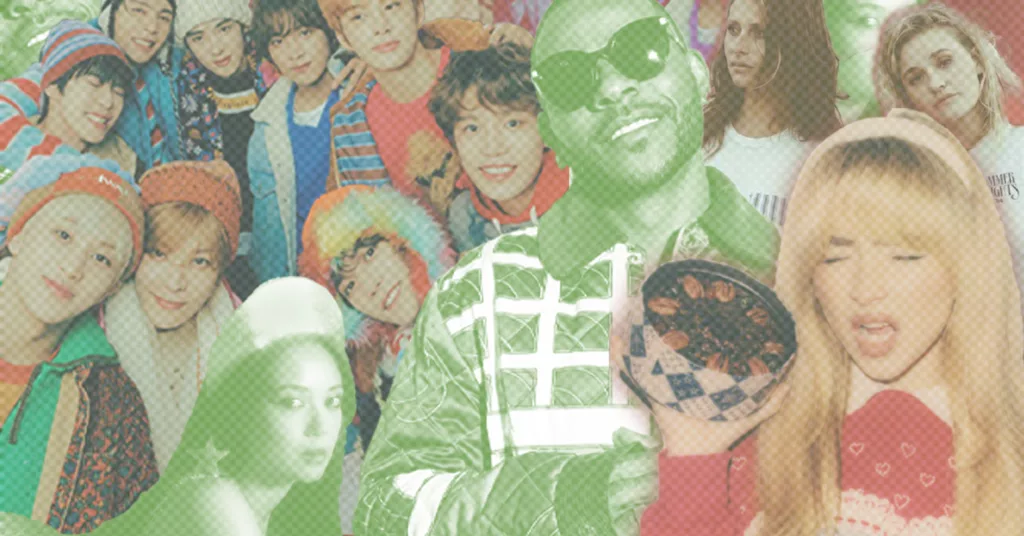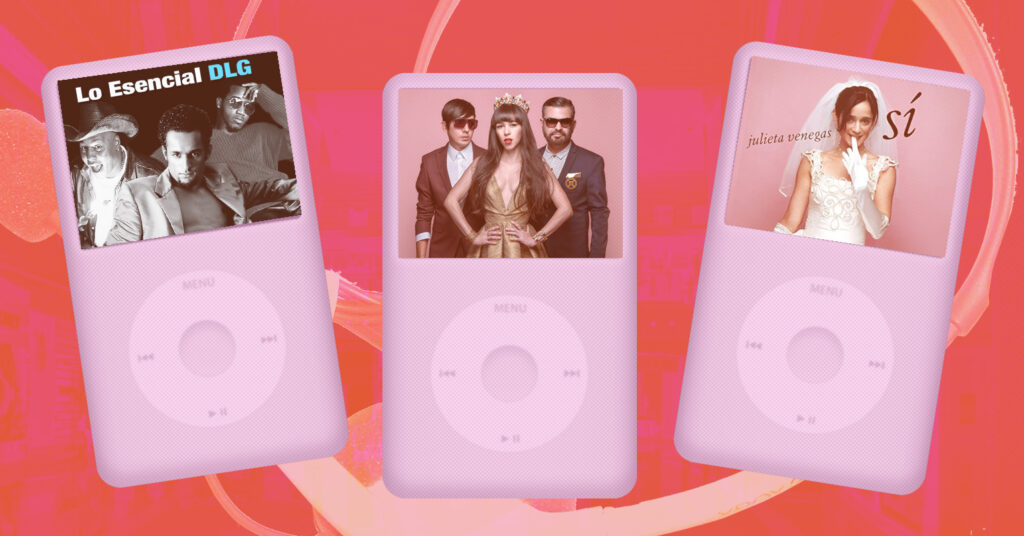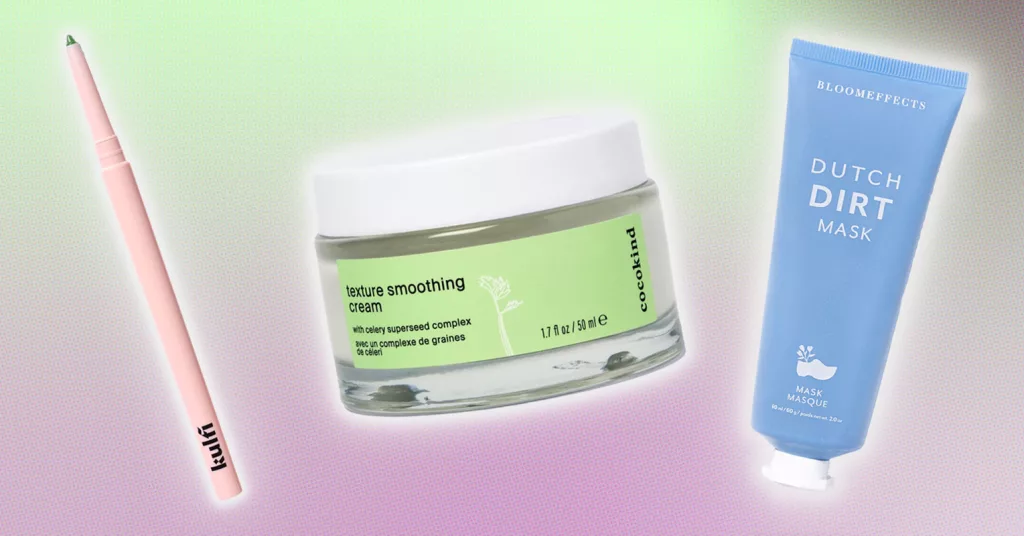Lessons with Legends: Fashion Show Producers Lynne O’Neill and Jean-Luc Drake Talk New York Fashion Week, Career Advice, and Growing Up Asian American

During Spring Summer 2025 Fashion Week, New York-based fashion show producer and director Lynne O’Neill and producer Jean-Luc Drake Oliver welcomed us backstage. Clipboard in hand, team EnVi slid into the role of production assistant at New York City-based event production company Hula Inc. as the duo took us behind the curtain to follow their every step. Fashion week overflowed with coordinating fleets of models, beauty professionals, and dress rehearsals.
Being surrounded by industry veterans created an immersive learning experience. Chasing after models, assisting finale lineups, and organizing backstage dressing rooms taught me invaluable skills in fashion and production. After working with stylists to fashion show producers, however, the message became clear: Being your genuine self amplifies any skill set. Their strong morals served a foundation for their hard work. Influenced by their cultural background and work experience, the professionals allowed their integrity to shine in the workplace.
Because of this eye opening experience, EnVi caught up with Lynne O’Neill and Jean-Luc Drake Oliver on a video call months after the fashion shows. The duo shared all their knowledge pulled from their AAPI heritage, their first jobs, and their life in the city. Simply, the runway was their classroom, but these legendary fashion show producers’ lessons can be applied anywhere.
Meet Lynne O’Neill
With forty-four years in the industry, Japanese-American producer and director Lynne O’Neill has been regarded as a veteran in the fashion industry. She specializes in producing and directing events at her New York City-based production company, Hula Inc. She started her career in PR by coordinating events for big box retailer Macy’s northern California region. Instantly, O’Neill’s drive and dedication grew the events into full-blown fashion shows, which was quickly recognized by luxury fashion houses. She worked with global designers including Gianni Versace, Calvin Klein, and the Missonis before she stopped and left the chaos behind her office doors. With her mind set on Japan, she moved with the thought of never returning to fashion.
Her friends and former coworkers quickly urged her to return to the industry. Once O’Neill returned to the United States, her career led her to the birthplace of American sportswear — New York City. In 1993, she worked on the first New York Fashion Week. Over the years, O’Neill became an industry favorite and often produced the first show of the season. Her prolific career led her to consult for television shows and movies, like Gossip Girl and Sex in the City: The Movie. O’Neill even had a Sex in the City character based on her (a fashion show producer named Lynne Cameron, played by Margret Cho).

Meet Jean-Luc Drake Oliver
Long before his career began, Filipino-American producer Jean-Luc Drake Oliver became obsessed with the fashion industry. He grew up scanning magazine mastheads and watching films like the fashion documentary The September Issue. Oliver’s fascination led him to working on local events in his hometown. After making a few connections, the then sixteen-year-old met Lynne O’Neill and hoped to intern on her production team.
At just sixteen years old, Oliver stepped into the well-oiled machine, Hula Inc. O’Neill and Oliver exchanged a few emails and eventually met outside the performing arts venue Lincoln Center of the Performing Arts in New York City. Oliver remembered his first exposure to fashion week as if it was yesterday.
“I’m on this ramp, and there are like a thousand models checking into hair and makeup. I’ve never seen anything like this before. After I get my credential, I walk backstage, and out comes, like, red-lips, Garçons. Own and, like, you know, the hair and the glasses, and then, like, the clipboard. That was like, ‘Oh god. That was like my initial, like, snapshot of Lynne. I remember that. I was like, “There she is,” recounted Oliver.

Over the years, he worked with O’Neill to produce and direct fashion shows for New York Fashion Week, Honolulu Fashion Week, and other global events. Now, with over 350 events under his belt, the self-proclaimed “fashion Swiss Army Knife” has dabbled in production, casting, live streaming, and set design.

Day in the Life
Reflecting on my time with the Hula Inc. team, I became curious about the producers’ routines during fashion week. Since they manage the production, O’Neill and Oliver juggle hundreds of tasks in just a single day. However, they are seasoned professionals. When asked about her routine, O’Neill calmly said, “It’s a bit of a formula, right?”
Both producers maintained a loose schedule for themselves to tame the chaos. During fashion week, their days started hours before the actual shows began. O’Neill and Oliver both started their mornings off with a ritual. O’Neill or her husband often grabbed her a chai latte with oat milk from a nearby coffee shop while, instead of a beverage, Oliver gathered his thoughts in the morning calm. “What’s going to happen today? What is today’s fashion?” were just a few of the ideas he shared with EnVi.
After their routines, their real schedule quickly picks up speed. The producers keep mornings reserved for final meetings with clients, designers, and stylists. Once they get to the venue, they slip on credentials and collect the team for a stand-up meeting. The company covers backstage coordination of vendors, and each team member usually directs a portion. However, the team members also have to adapt to the changing needs of the production. Models, designers, PR, casting, and beauty professionals flood backstage during the hours leading up to the show. The constant frenzy welcomed drama but also a constant hum of white noise — a buzz only heard at fashion shows.


A rehearsal is non-negotiable for O’Neill. With two hours on the clock, designers, models, and the production team gathered along the runway. During rehearsal, she directs the models through the runway walk. The routine remains important to iron out any kinks as each show’s set design differs. But her calm, yet clear demeanor isn’t without her signature ensemble and playful quips. O’Neill’s red lipstick and Comme des Garçons dress can be spotted in the middle of towering models.

O’Neill created a playful energy. Often, she would hand the microphone to the models and give instructions threaded through humor. “Walk through the music, not to the music,” has remained one of her favorite parables for decades. Her style of teaching often results in her team befriending models to other companies by the end of the season.
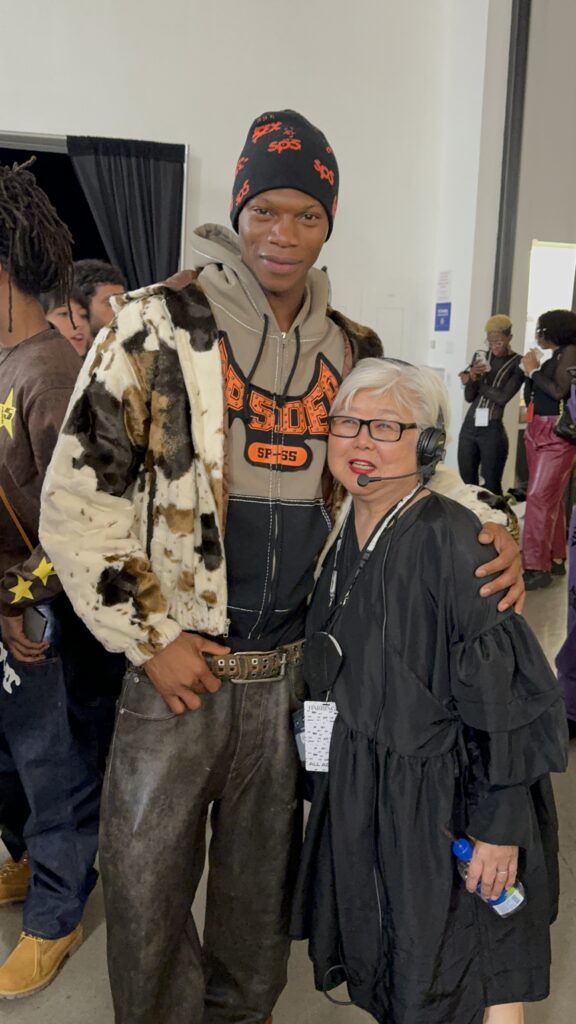
The seconds that lead up to the fashion show remained quiet and still. Then, the beat hit and the first model was sent out. The feeling of working the show was similar to a performance. Everyone knew their part and had one chance to get it right. Quick changes, touch ups, and final sewing all occurred in a few minutes. Then, the final girl walked off the stage and the show finished. As camera snaps and joyful cheers fill the air, a euphoric energy flooded the backstage – s one that rivaled sportsmen after they win a match.
The Hula Inc. Difference
No matter how deep the water, the Hula Inc. team moved in synchrony throughout fashion week. Their synergy was built on the company’s two values: a respect for others and an immense care for their work. O’Neill’s team consisted of only a handful of people, so everyone was expected to execute their job with utmost care.
Much of the team first connected with O’Neill in different roles than they are in today. Whether they met her in the industry or in her neighborhood, everyone has a strong bond to O’Neill as a person. Multiple times throughout our interview, the producer said, “I love what I do because of the people.” I think this is why she’s very selective. The foundation creates a cushion for when the chaos grows behind the black curtains.

Throughout her career, genuine connections with people have brought O’Neill back to fashion time and time again. Her life showcases the power of connecting with people.
O’Neill shared why she prioritizes connection in such a fast paced industry. “Living in Hawaii, when you meet somebody, they become a part of your extended family. So, I think that has really influenced me in who I am today,” she said.
In the fashion industry, it’s easy to get caught up in the chase of working towards the next best opportunity. Talent and creativity saturates the scene, so occasionally people don’t appreciate the opportunity of collaborating with like minded individuals. But, O’Neill reflected on her career and revealed what makes her choose to go back to fashion.
The industry veteran said, “The thing is, I think that [connecting with people] what keeps me working in a creative field and working with some of the best people in the industry in their field. Working with them but also being able to connect with them. You know, because what is the point if you don’t connect with people in life?”

The Finale Master
The finale of a fashion show occurs when models and fashion designers take their final walk down the runway. It signals the ending of the show and creates a lasting impression on the viewers. To patrons, the finale appears to be a poetic end to a collection. However, they don’t know what goes on behind the black curtains.
It takes a true master to coordinate a seamless finale. Something to note is that organizing a finale happens in just a few minutes. Finales can be planned beforehand, but there’s many variables at play as the clock ticks down. All week long, the back-of-house team witnessed Oliver’s signature skill at every fashion show. The finale master grabbed models from all directions and organized them as if it was a science. The normally expressive producer became unwavering as the seconds ticked away on the clock.
Those who know O’Neill recall that she has always said, “Jean-Luc [Oliver] is the master of the finale.” After watching Oliver, I became curious about how he honed this skill. His one piece of advice? Clear communication.
Oliver explained, “My goals are to communicate effectively with the styling team, the designer, and the design team. Then, also continuously updating the director, Lynn [O’Neill], on where the models are at. I just try to get as much information as possible about the finale.”
The Meaning of AlohaZen
Those who work with O’Neill rely on her to be the calm force amidst the stress. Her husband coined her skill AlohaZen, and called it her super power in passing. When producing a fashion show, O’Neill holds the responsibility of a million moving parts. She could easily give into the stress and let it consume her, but she chooses to stay calm for her team. When situations get tense, O’Neill focuses on the facts and the solutions with a calm mind. During New York Fashion Week, I witnessed this multiple times. As the fire got hot, O’Neill became a beacon of tranquility for her team and vendors.
The veteran producer shared, “I’ve been doing this for so long and long ago I realized that I can’t be stressed out about everything all the time. If you let the stress and chaos take over, then you can’t make clear decisions. You can’t be open to change. We can be really organized and ready to do the show, but things will always come up, right? It will always come up at the last minute. You have to be really centered and balanced, and keep moving forward.”
Being Asian-American
Even in the metropolitan hub of New York City, seeing a duo of Asian fashion show producers walk into a room is a rarity. That reality became O’Neill and Oliver’s strength over the years. Rooted in their cultures, they both emphasized common principles in Asian households — hardwork and respect. However, their different backgrounds showcased different sides of the same coin.
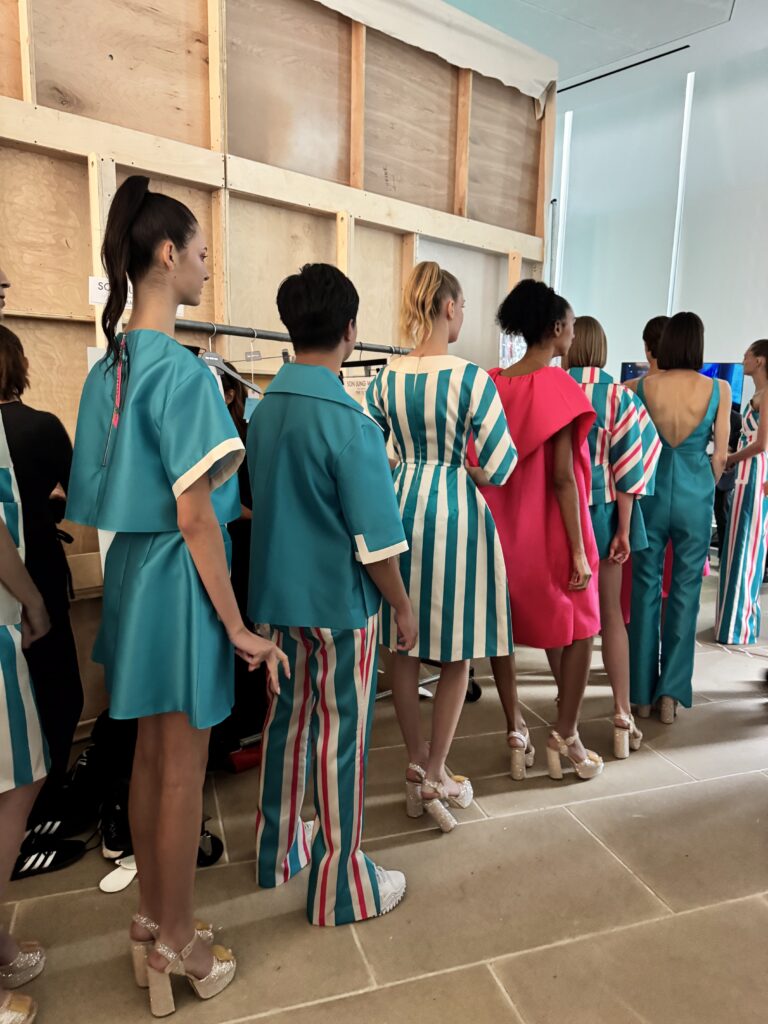
Born to Japanese parents in Honolulu, O’Neill moved to Los Angeles as a young child with her family. Her connection to Hawaii remained strong because she often stayed with her grandparents in the islands. The unique dichotomy created a strong set of fundamentals that were equally Japanese and Hawaiian. Whether it was sports or present wrapping, O’Neill learned early to not strive for perfection, but simply to try your best. Meanwhile, she absorbed what it meant to act with aloha spirit.
Explaining how she uses her Hawaiian influence, O’Neill said, “I try to connect with them through, you know, kind of with the heart. For me, I always feel like that’s like, you know, the aloha spirit. Also, I always wanted to honor my parents and respect my elders. That’s what it is; it’s very Hawaiian.”
Similar to O’Neill, Oliver was born in the urban city of Mandaluyong in the Philippines and moved to the United States at the age of four. His father worked as a computer programmer and relocated his family during the technology boom. As in most Asian families, Oliver’s family pushed him to follow a more stable career path. So, pursuing fashion meant he had to work twice as much to show his family it was a viable option.
When reminiscing about his family, he kept emphasizing the grit of the Filipino people. “My father wanted a better life for us, so he said, ‘I’m going to the United States. And however I make that happen. I’ll make that happen.’ Then, he did it. When I look at my father, when I look at my mother, when I look at my grandparents, and other people in my family, I look at a group of individuals that are hardworking, that are genuine, that are unapologetically themselves, and proud to be Filipino, and I am too, you know, and I love that.”
What’s for Work Lunch?
After collecting many New York Fashion week seasons under their belts, O’Neill and Oliver know their way around Manhattan Island. Restaurants, bars, and cafes serve as the perfect meeting rooms and post-fashion show hang out spots. Plus, a big team dinner remains one of their favorite ways to close out a season.
If you’re heading to The Big Apple, you might want to explore these food recommendations. Oliver often stops by the American Contemporary restaurant THE MODERN for a bucket of fried chicken. Thai Diner and Five Guys remain his top picks for quick bites.
O’Neill’s revealed her group hangout spot — Bar Pitti. Frequented by A-Listers, the infamous Italian eatery garners a large crowd with their high-quality, authentic cuisine. An Italian-style bakery, Grandaisy Bakery, is also one of the producer’s post-show favorites.
Advice For Professionals in Fashion
Production pushes people to their limits because of its rapid pace. However, the pressure often puts people in the prime spot to learn. Combined, the producers have over fifty years of work experience, so they gave a lot of advice for professionals in fashion.
O’Neill emphasized that it’s ok for one to feel like they’re drowning. During her time at Macy’s, the freshly minted event producer was in over her head. Every day felt like a challenge, but it forced her to learn at a rapid speed. She recalled, “I was drowning and I would never come up for air again. And, everybody goes through it and that’s how you learn. You don’t learn by when it’s easy, you know, you learn when it’s hard. That’s when you learn really big lessons.”
Towards the end of the conversation, Oliver wanted to remind professionals to not let their work solely define them. His career started in highschool, so the producer understands how easy it is to fall into the mold of what the industry wants you to be. “I think the most important thing is making sure you don’t forget who you are outside of it,” said Oliver.
Remembering who you are and where you came from remain of utmost importance for the producer. To this day, Oliver recharges himself by meeting with his family and friends. The balance allows him to show up to work as his best self. The producer explained, “As fabulous and wonderful and full of whimsy as fashion is, you can’t let your work define who you are as a person.What you do and what you say behind closed doors to people who are not in your industry, and how you treat others just in your everyday life, that’s really who you are.” Cultivating his personal life allows him to work with the best people as his best self.
Lastly, O’Neill shared, “I also think it’s important to be egoless. You know, it’s not about you, it’s not about your show. It’s really about the designer. We always want the best for them. We want them to have the show that they want.” Despite her references towards production, the advice can be applied to any industry. Emitting a selfless energy and connecting with others through respect goes a long way.
Following O’Neill and Oliver during Fashion Week showcased the power of true human connection. New York Fashion Week lived up to the expectations: glamor, peak professionalism, and the constant need to work faster. But the core showed itself to be real people with impeccable care for their peers, and their care for others could be directly felt through their work. The universal code can be applied in any industry or scenario. So, no matter the setting, always remember: “Where’s your AlohaZen?”
Want more AAPI fashion news? Check out All The Best Looks From The 2025 Gold Gala here.

